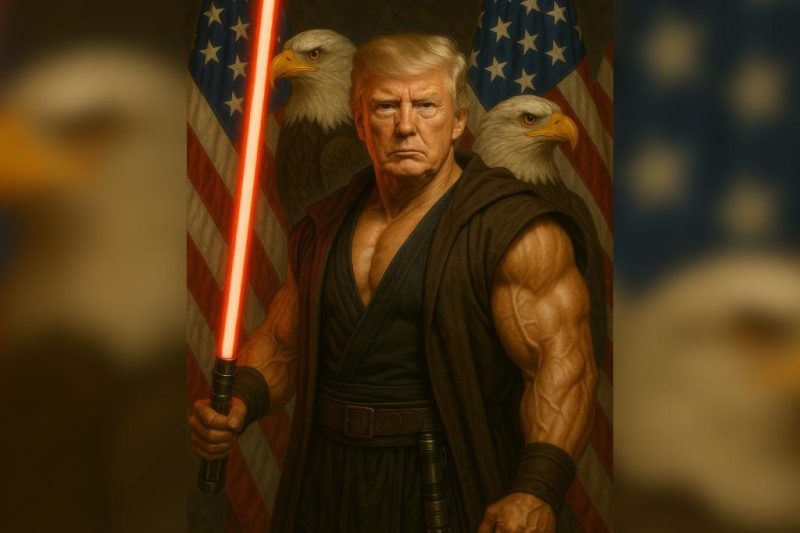
This year’s Star Wars Day celebrations took an unexpected turn. The White House, in a move that’s certainly generated buzz, marked the occasion with an AI-generated image depicting a remarkably muscular President Trump wielding a lightsaber. The image, which quickly spread across social media, features Trump in a heroic pose, ready for battle, complete with the tagline “Make the Galaxy Great Again.” The image itself is striking, a clear departure from the usual official White House imagery. The level of detail and the almost hyper-realistic rendering of the former president have left many wondering about the choice of medium and the message it aims to convey.
The use of AI to create this image raises intriguing questions about the White House’s communication strategy. Is this a nod to the growing popularity of AI-generated content, a playful attempt at engagement, or something more calculated? The image’s immediate virality suggests that it certainly achieved its goal of grabbing attention, regardless of the underlying intent. The juxtaposition of the iconic Star Wars imagery with a political figure is undeniably jarring, prompting a wide range of reactions from amused approval to outright criticism.
Many are questioning the implications of using AI to create such a powerful and potentially misleading image. The ability of AI to generate realistic images of people in situations they’ve never been in raises concerns about the potential for the spread of misinformation. This event serves as a compelling example of how AI can be used to create engaging content, but also highlights the ethical considerations surrounding its use in political communication. The debate is now open: was this a clever marketing ploy, a harmless bit of fun, or a step too far in the world of digitally altered political imagery?
Ultimately, the image of a lightsaber-wielding, buff Trump will likely remain a memorable—and debated—moment in the history of Star Wars Day celebrations. It’s a clear indication that even a seemingly simple holiday can become a platform for political messaging and a testing ground for the ever-evolving landscape of digital communication.










